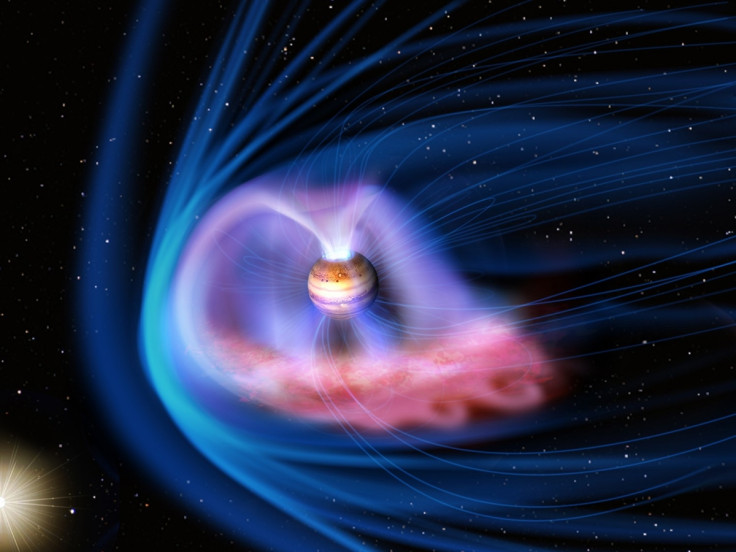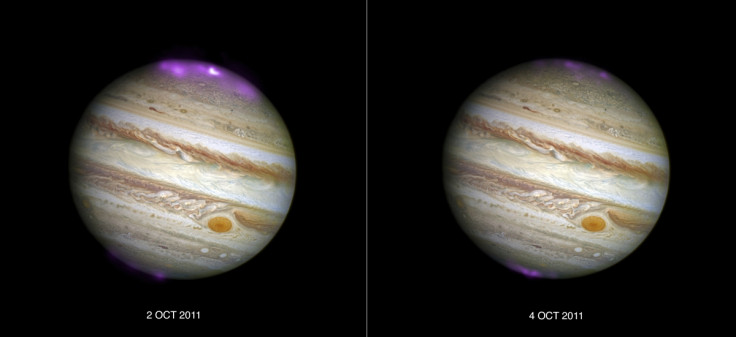Giant X-ray aurora seen on Jupiter is hundreds of times brighter than the Northern Lights

Solar storms have caused Jupiter to show an enhanced version of its own Northern Lights as a new X-ray aurora is seen from the planet. This aurora is eight times brighter than average for Jupiter, and hundreds of time brighter than the famous aurora borealis.
Researchers studied how this aurora changed as the intensity of the solar storm varied. This is the first time that Jupiter's aurora has been studied while a solar storm is actively impacting upon it.
"By studying how the aurora changes, we can discover more about the region of space controlled by Jupiter's magnetic field, and if or how this is influenced by the Sun," said William Dunn, lead author of the report from UCL's Mullard Space Science Laboratory in Dorking, England. "Understanding this relationship is important for the countless magnetic objects across the galaxy, including exoplanets, brown dwarfs and neutron stars."
The researchers used Nasa's Chandra X-Ray Observatory to observe the aurora in 2011. Their results are published in the Journal of Geophysical Research.
Solar storms
A solar storm is another way of describing a 'coronal mass ejection'. This is where particles from the Sun are ejected into space in one big discharge. This causes a big rush of solar wind – groups of charged particles – which can disrupt a planets magnetosphere.
They found that solar storms compress Jupiter's magnetosphere – the area of space that is part of the planets magnetic field. This moves the boundaries of the magnetic field two million kilometres, or 1.2 million miles, through space; almost five times the distance between Earth and the Moon. This creates the X-ray aurora seen by the astronomers.
Two 11-hour observations also allowed the scientists to make a 3D picture of the X-ray activity. This can now be used to pinpoint locations in Jupiter's magnetic field to study further. The scientists aim to continue studying the effect of solar flares on Jupiter. They believe their research could ultimately help in the search for life in space.

"New insights into how Jupiter's atmosphere is influenced by the Sun will help us characterise the atmospheres of exoplanets, giving us clues about whether a planet is likely to support life as we know it," said UCL researcher Graziella Branduardi-Raymont.
This study comes just months before Nasa's Juno mission to explore Jupiter and its magnetic field. It is hoped the mission will uncover some of the mysteries surrounding the origin of the planet.
Scott Bolton, principal investigator of the Juno mission, told IBTimes UK: "Jupiter will hopefully tell us the recipe for making a solar system. We are searching for the first piece of the puzzle.
"We'll also be looking at the magnetosphere. So, our satellites will orbit the poles – not the equator. This is key to learning about the origin and formation of Jupiter."
The Juno spacecraft is due to reach Jupiter on 4 July 2016.
© Copyright IBTimes 2025. All rights reserved.






















